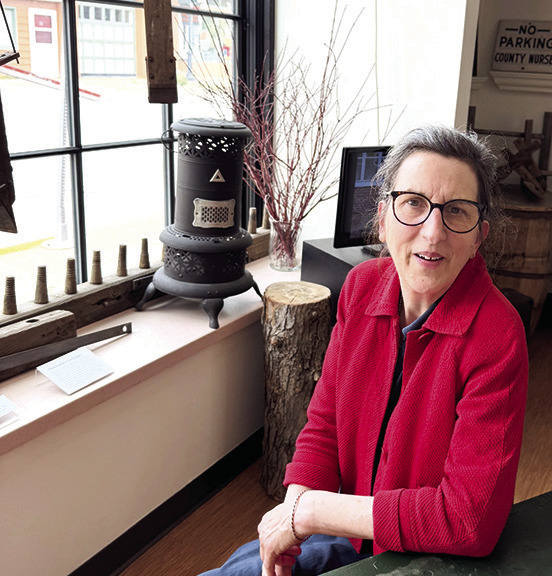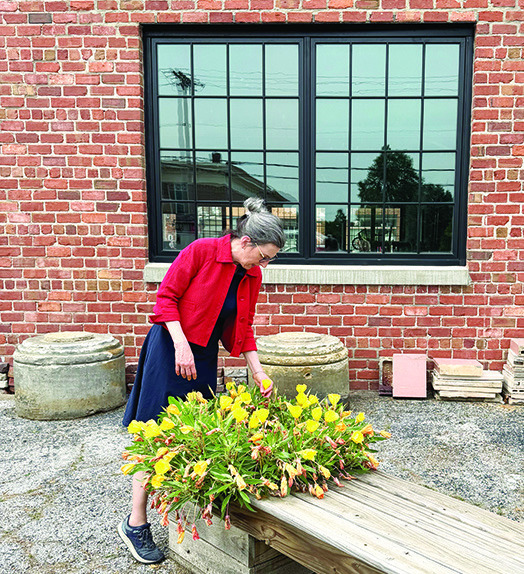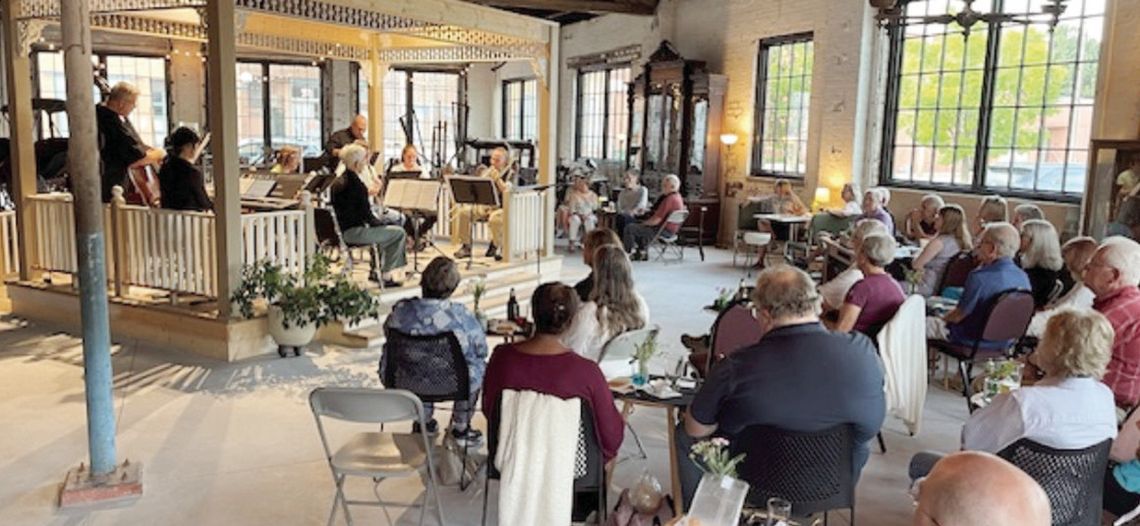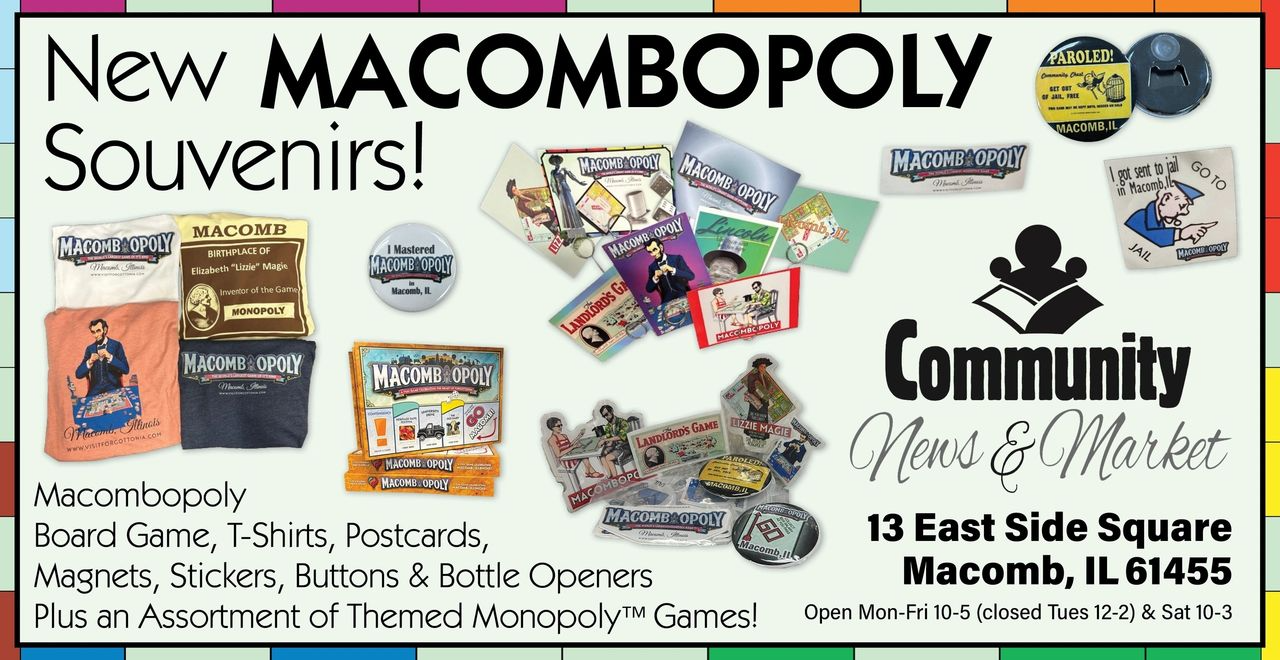An old building in a prime corner location one block south of Macomb’s Courthouse Square is a hub of activity. The former Ford dealership that sold Model Ts was transformed to become the new home of Western Illinois Museum more than two decades ago. A four-year renovation ending this summer has increased capacity, comfort and convenience for better visitor experiences.
The museum began in 1974 with a collection of historically significant items displayed on the third floor of Western Illinois University’s Sherman Hall. After years without a curator, decreased funding and limited hours, the museum needed help. Community leaders established a relocation committee in 2000, and worked with the City of Macomb to purchase and renovate the building at 201 S. Lafayette St. The new museum opened in October 2002.
“The partnership that happened when the building was purchased in 2000 was that there were three entities using the space – the Macomb Area Convention & Visitors Bureau (CVB), the museum and the McDonough County Genealogical Society,” said Sue Scott, the museum’s executive director. “We took ownership in 2019, which was the long-range plan.
The CVB moved to the train station the following year.”
The genealogical society continues to lease space in the southwest corner of the building from the museum.
‘Renovate to Innovate’ Western Illinois University Museum is celebrating the end of a four-year capital- improvement project this month, although it’s likely work will continue into July.
The Renovate to Innovate campaign began with a chain of events launched in 2019 when the museum received a bequest from the estate of Gil Belles, a founder of the museum who passed away in 2017.
Belles’ bequest funded a facilities plan for the future of the museum.
“It’s important to have something from an architect and engineer showing what you’re going to do,” Scott said. “From the facilities plan, I can apply for grants and show what we’re doing.
I can say, ‘This is the plan and this is what we’ve done.’
It’s interesting: Once you can show that you can manage money, it is easier to raise more money.”
The three-phase improvement project began with replacing all the windows in the building, which consists of the former automobile showroom, built in in 1926, and a garage on the east side that was added in 1941. The openings for the showroom windows had been reduced to hold smaller windows, which were partially covered by awnings outside. The garage door openings had been covered with boards.
Scott called the new windows “monsters.” “Once we took off the awnings and put the new windows in and began working more with the displays, people walk by and come in.”
The architects who worked on the facilities plan said the large windows are among the museum’s biggest assets because they draw people into the space. The windows that replaced the solid garage doors bring light into an area that had been dark.
Getting the windows wasn’t easy. The museum asked several manufacturers to provide plans for producing replicas of the original windows. One responded – Pella, which has a manufacturing plant in Macomb.
“They were the only company that would work with us in terms of offering us an estimate and designing windows to replicate the same scale and size and openings,” Scott said. “They were amazing to work with, so it was like icing on the cake.”
The windows were made in another Pella factory because the Macomb site doesn’t create the custom windows needed for the project.
Besides producing the windows, Pella, through its foundation, provided financial support.
Phase two of Renovate to Innovate was replacing the floor in the unused garage, which was marred with large wooden drains and metal fittings where the car lifts had been.
“As cool as all that was, it was a huge trip hazard,” Scott said, recognizing that not all historical things should be saved.
The existing floor was replaced with inches-thick concrete that matches the level of the west side of the building. Electricity was placed in the floor to accommodate the needs of changing exhibits and events in the large space.
Installation of a heating, ventilation and air conditioning system in the garage is the final, ongoing phase of the plan.
With these changes, the museum has doubled its usable space.
Boosting programs Two years ago, Western Illinois Museum doubled the number of programs it offers.
“When we did long-range planning in 2018, we moved toward a participatory approach,” Scott said. “We looked at other case studies and learned there was a trend across the country.
Visitors want to participate.
They want to be engaged.
They don’t want to hear a curator talk about what they know. They want to feel it themselves.”
The museum’s Blind Swine Speakeasy programs introduced visitors to events during Prohibition, an era from 1920 to 1933 when alcoholic beverages were illegal in the United States.
Scott explained the name: A rural speakeasy – an illegal drinking establishment – was called a blind pig. People bought tickets to allegedly see a pig. Instead, they got a drink.
The speakeasy events incorporated other topics of the decade, such as local theaters showing “talkies,” the first motion pictures with sound; the 1924 Immigration Act, which restricted immigration; and women’s suffrage. For the latter, program participants received a red or yellow rose at the entrance after declaring whether they were for or against women’s right to vote. During the event focusing on immigration, some visitors followed a path that replicated entry to the U.S. through Ellis Island.

Scott calls the speakeasy a “hybrid program.”
That concept led to the development of Our Front Porch. A new façade of an old-fashioned porch sets in the middle of the east side of the museum. It replaced a smaller porch that had been in the older portion of the building.
“History and ideas were usually shared in settings like front porches,” Scott said. “I found it was hard to get people to document and write down their history.
But if I could get them to tell me their story in a comfortable setting like Our Front Porch, I could pull out these very cool parts of our local history.
“A lady who was a dressmaker said, ‘I didn’t do anything important,’ but she taught all these people how to sew and to dress and to make clothes and to have a style. And everybody loved her because she made them feel like a million bucks.
These are the kinds of things I try to help people see they have a place here and that their history needs to be documented and shared and respected. That’s the role of a small-town humanities organization.”
Raising funds
The cost of the four-year museum renovation, including the new front porch, was $480,000. It was funded by donations and $185,000 in grants. More than $200,000 was spent with local contractors and suppliers.
“When you need something, people show up, whether they financially give when they can, when we need money for things like renovation or when we need people to help with a program or help with a collection,” Scott said. “We have a really wonderful group of people who show up and help us” This year, the museum switched its donor language from “membership” to “annual donor” to be compliant with IRS standards.
Instead of having an annual donation drive, contributions are accepted online or by check throughout the year to help maintain a cash flow.
A $5 donation per visit is suggested. Most visitors, which number about 5,000 per year, put money in the donation jar near the entrance.
“If they come in the door, typically they will support us either by coming back and even potentially becoming an annual donor,” she said. “If they don’t see the donation box when they come in, they ask about it on their way out. If they’ve had a good experience, I’ve had people give me $100. It’s amazing.”
Scott spends several hours a week working on grant applications for funding the nonprofit organization.
Working behind the scenes Western Illinois Museum has three employees – Scott, Karen Mencel, collections manager, and Claire-Happel- Ashe, program manager. Scott is working on a proposal to hire a part-time youth programming manager.
This year, college interns majoring in history and English are working to boost use of a new, unique space in the museum. Before the renovation, most of the museum’s 5,000-piece collection was stored in an area that wasn’t accessible to visitors. Now, the storage shelves are in an open area with some items on display.
Others remain in protective packaging until they are showcased.
The interns create exhibits with brief descriptions and QR codes leading people to in-depth information on the museum’s website.
The museum has a board of directors that ensure financial responsibility and compliance with nonprofit regulations and human resources law. Its advisory council helps plan events and other activities.
Other volunteers guide visitors, help manage the museum’s collection and work on database entry.
Making more changes Completing the Innovate to Renovate campaign is a stepping stone to creating a “more visitor-friendly, fuller plan,” Scott said. “The idea is there will be a walkway around the building to move people through the space. It lets people see where they’re going. That’s part of what architects help you with. It makes it easier for visitors to navigate your space and entice them to move through.”
To do this, the McDonough County Genealogical Society quarters would be moved to the center of the west section of the building. Besides helping the museum fulfill its plan, the move would create a better space for the society.
Fundraising for this project has not begun.
However, the museum recently received a grant to focus on ways the museum and genealogical society can work together to enhance services, share resources and strengthen the missions of both organizations for the benefit of the community.
“The concept would make the building become like a historical center where people can come and do research and look at artifacts, and they can look at our collection and they can research our archives and then go to the genealogical collection and benefit from their research skills so it becomes a cultural and historical hub.” As ideas are developed, there will be more fundraising and grant applications.
“That’s what I’m excited about – working closely to figure out the plan.” Scott said. She knows her work will be bolstered by the community.
“There are traditions people really love year after year, but they’re always willing to try something new. I think that’s a really unusual mix,” she said. “People think small towns are kind of staid in their ways, and I think we have that because we value the tradition and history and what that means to the community, and I respect that. But I know I can do something like having a front porch or a speakeasy and people will show up.”










